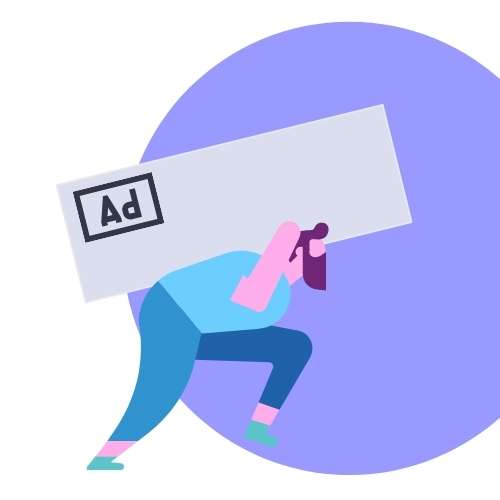
As announced last May, Google’s changes are here. The company is taking measures against all the ads that consume too many resources of visitors’ computers. In other words: Google has changed its adblocker. So here is how Chrome’s adblocking is affecting publishers.
The grey box

Heavy ads will no longer appear on any site. That’s basically what the changes translate into. Instead, users will see a grey box with the following text: This ad used too many resources for your device, so Chrome removed it.
But what’s a heavy ad? Basically, all the ads that meet any the following characteristics:
- 60 seconds of CPU usage
- 15 seconds of the browser’s computer’s CPU usage over any 30-second period
- 4MB or more of network data
Better ad standards and abusive experiences
Google claims to “have taken steps to address ads that most people find unacceptable.” So, the initiative to block these ads is part of their fight against what they call abusive experiences. In their own words:
In order to save our users’ batteries and data plans, and provide them with a good experience on the web, Chrome will limit the resources a display ad can use before the user interacts with the ad.
Chromium Blog
According to their own analysis, only 0.3% of ads exceed the above thresholds. However, “they account for 27% of network data used by ads and 28% of all ad CPU usage.”

So, what’s the issue?
While it actually seems like a nice initiative and the percentage of heavy ads is meant to be low, things are not so easy.
Neither publishers, nor advertisers can control visitors’ computing power. This is an extremely relevant fact, because the entire adblocking change is based on individual devices. So, how does Google actually determine when to block an ad? It is almost impossible to determine how much computing power will ads eat up per individual device.
In practice, this means that some ads will appear on some devices, but they will be blocked on others. This way, advertisers will have to work on light ad designs, meaning ad designs that consume as less resources as possible. This limits the creative experience and can also push advertisers to save some of their budget.
Another obstacle for publishers to increase their revenues
Online publishers have been dealing with ad blockers for quite some time already, but this is another obstacle in their way towards recovering from a terrible year.
So, what’s the best strategy now? According to Michael Yeon, VP Marketing at Admiral:
Publishers should make sure they have a solid anti-adblocking solution in place. On top of increased adblocking by Google Chrome, the move to stop using 3rd party cookies is another big reason for publishers to build their own first-party data via a strategy leveraging adblock recovery, paywalls, regwalls, paid subscriptions, integrated privacy management, and more.
Source: whatsnewinpublishing.com
What are the effects of adblocking for publishers?
Google’s adblocker has been updated and now publishers won’t be able to display heavy ads. The reason for this decision is to avoid abusive advertising experiences.
What can publishers do to avoid the negative effects of Google's adblocker?
Having a solid anti-adblocking solution and creating first-party data strategies will help publishers increase their revenue and not suffer the negative effects of this update.